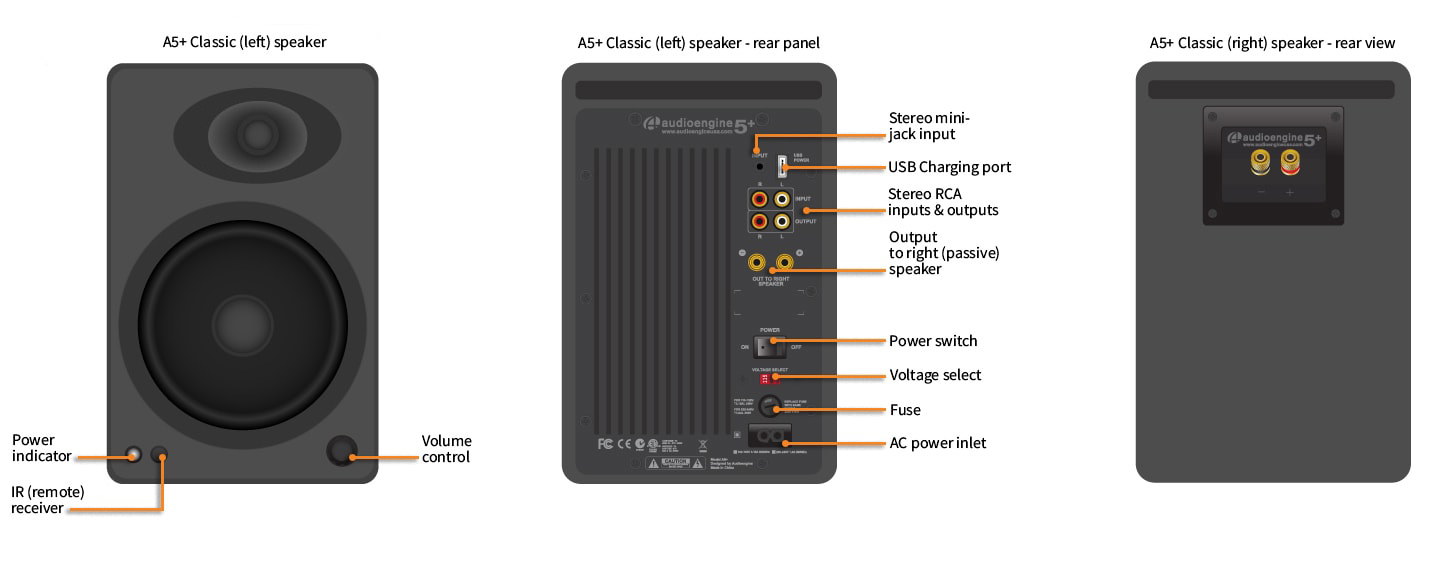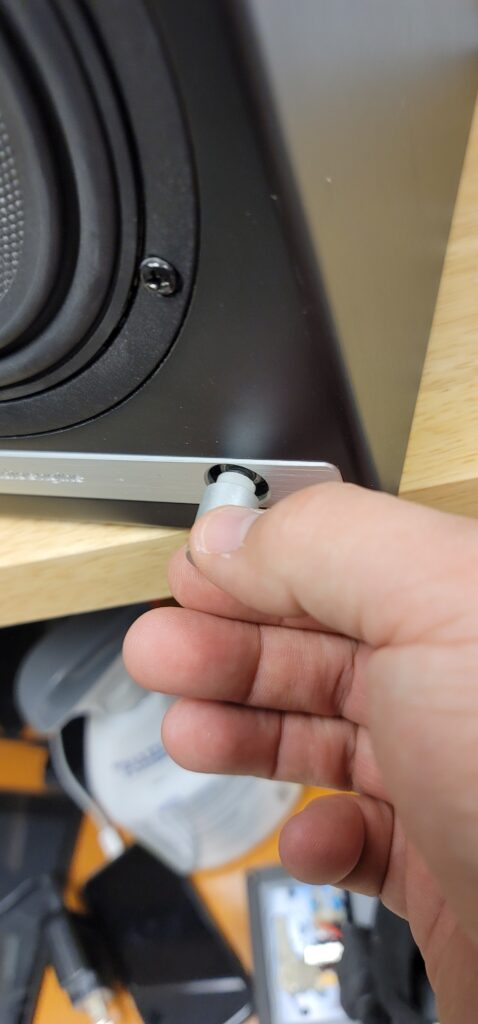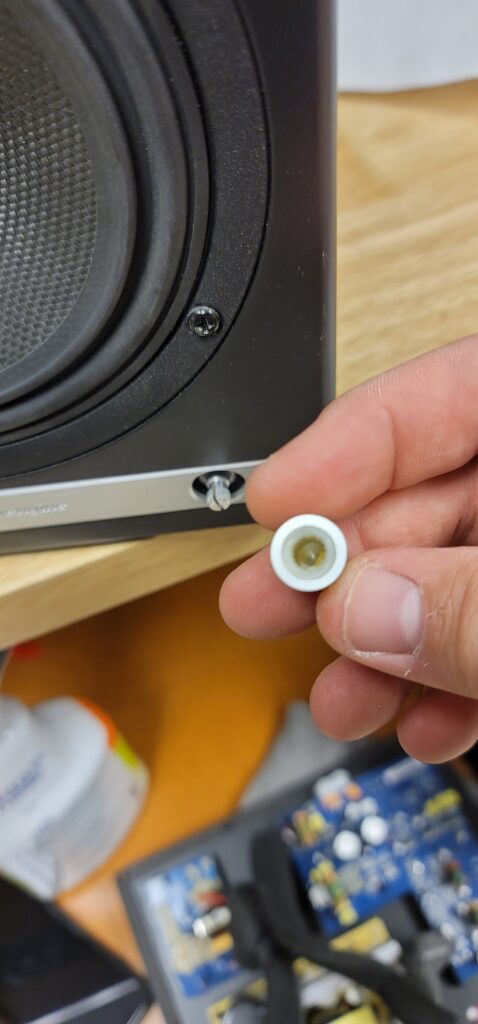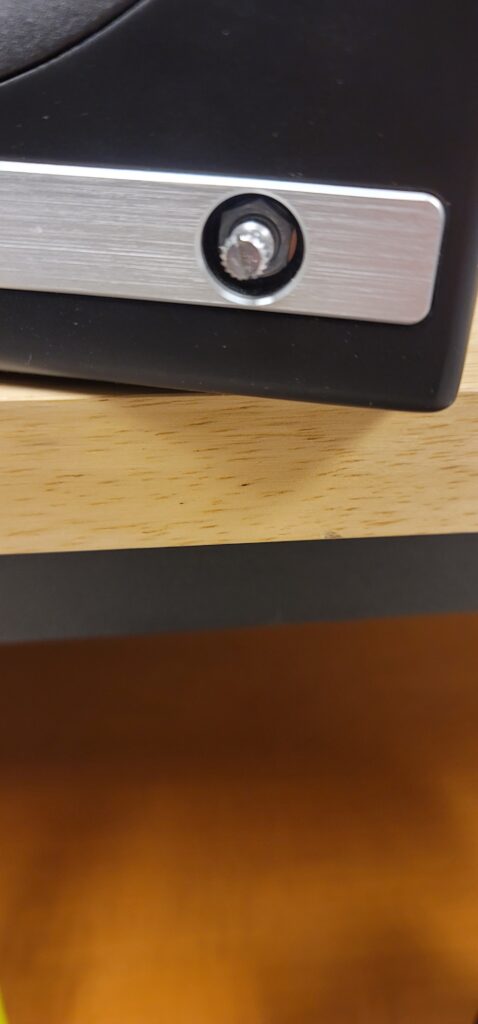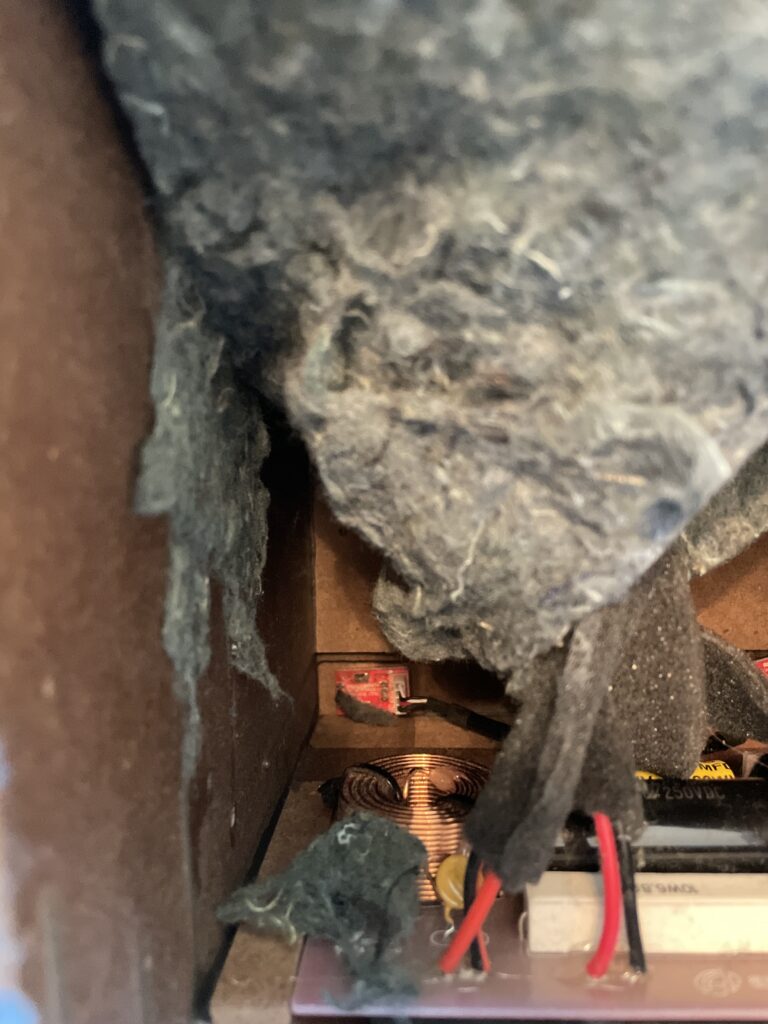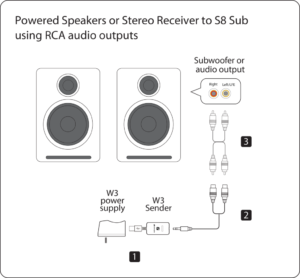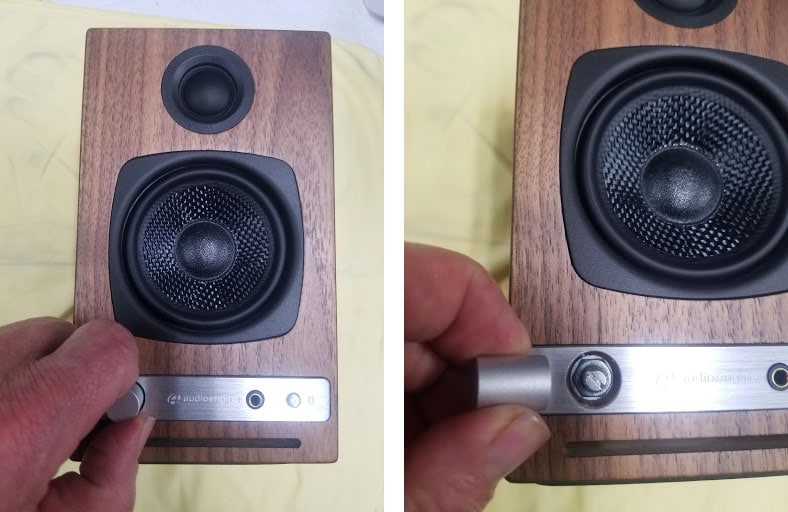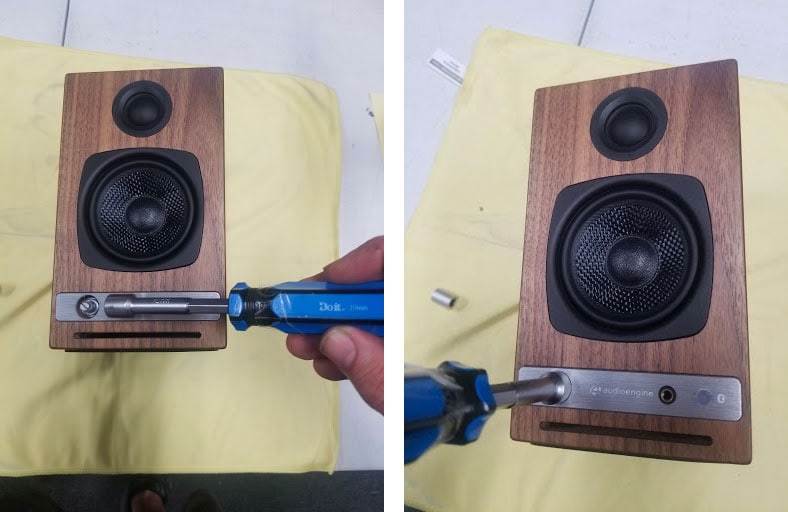Quickstart Guide
A5+ Classic Quick Setup
Step 1 - Speaker Placement
Although your Audioengine 5+ speakers are very forgiving with regards to placement, it’s true that proper speaker placement can have an impact on sound quality. There seem to be different theories on correct speaker placement but rooms and tastes are different so it’s difficult to recommend a perfect setup. We do suggest you feel free to experiment to see what works for you. As a general rule of thumb for the best soundstage and imaging, the speakers should be equidistant from side walls and a different distance from rear walls. Tweeters should be at about eye-level in your most frequent listening location and for the best bass response we recommend at least 6 inches of clearance between the rear of the speakers and the wall behind them. Here are a few more suggestions, assuming you have some exibility regarding where you place your speakers. No need for concern if your situation and listening environment dictate the speakers’ position.
• Both speakers should be equidistant from your primary listening position.
• Placing the speakers at least 6 feet (1.8m) apart usually provides the best imaging.
• Try to keep the speakers near the front edge of shelves or cabinets.
• Allow at least 6 inches of clearance between the rear of the speakers and the wall or surface behind them.
• If you need to turn the speakers on their sides, position the tweeters toward the outside.
• If used on a desktop for computer speakers, it’s best if they are placed on a solid surface
Step 2 - Connecting the Speaker Wire
The Audioengine 5+ speakers have amplifiers built into the left cabinet and the included speaker wire is used to connect both speakers to each other. The A5+ uses high quality, ve-way gold plated binding posts that will accept heavy gauge bare wire, banana plugs, spade lugs, or pin terminators.
1) Use your thumb and finger to unscrew the binding post connectors on the back of each speaker.
2) Insert each speaker wire into the holes on the side of binding post connectors, making sure to connect the positive (+) terminal on the left speaker to the positive (+) terminal on the right speaker.
3) Retighten the binding posts with your ngers.
4) Verify that only the exposed portion of the speaker wire is secured rmly in each connector.
5) Make sure that none of the speaker wire strands have come in contact with an adjoining terminal.
Note:
As the Audioengine 5+ speaker system includes built-in power amplifiers, do not connect the speaker terminals to the speaker outputs of a stereo receiver or amplifier.
Step 3 – Connecting the Power Cord
1. Verify that the power switch on the left speaker rear panel is in the OFF position.
2. Conrm that the rear panel voltage selector switch is set to the proper voltage for your area.
3. Connect the power cord into the left speaker and the other end into an AC power outlet.
Note:We recommend using a high-quality surge suppressor and/or AC line filter on all electronics equipment.Step 4 – Connecting Audio CablesUsing the appropriate audio cable (3.5” mini-jack and/or RCA cable), connect your audio source (computer, iPod, etc.) to the A5+ audio inputs. One of each cable type is included.Note:Both audio inputs on the A5+ are active so two audio sources may be connected to the speakers at the same time without the need for an input switch.
Step 5 – Operation
1. Move the A5+ rear panel power switch to the ON position. The left speaker front panel power indicator should ash a few times then go solid.
2. Turn on your audio input source and adjust the volume to the desired listening level.
3. Adjust the A5+ speaker volume level with the volume knob on the front panel or with the included remote control.
For the full setup guide, download the attached PDF:
A5_plus setup guide_web
A5+ Classic Setup Video

